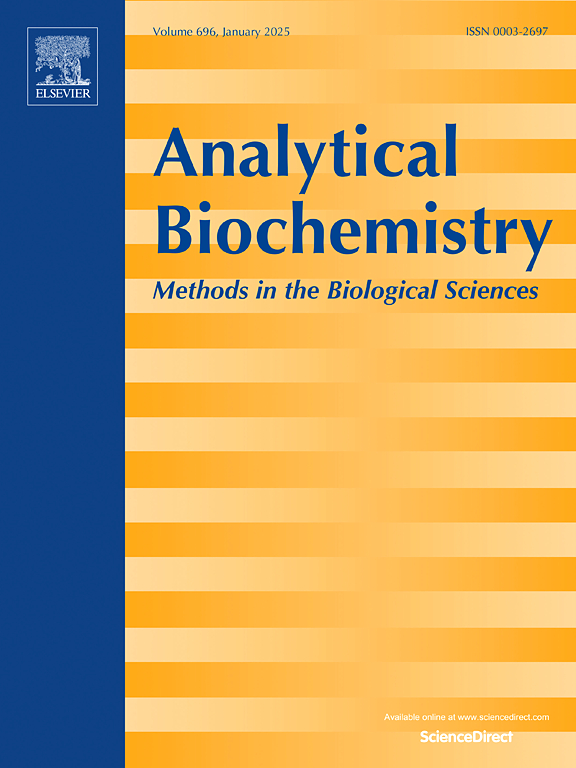脂质代谢相关基因标记的鉴定和多发性硬化症诊断模型的构建:生物信息学和机器学习的综合分析。
IF 2.6
4区 生物学
Q2 BIOCHEMICAL RESEARCH METHODS
引用次数: 0
摘要
背景:多发性硬化症(MS)是一种引起神经功能障碍的自身免疫性炎症性疾病。脂质代谢失调与多发性硬化症的发病机制有关。本研究旨在鉴定脂质代谢相关基因标记,构建多发性硬化症的诊断模型。方法:从gene expression Omnibus数据库中获取多发性硬化症的基因表达谱。鉴定差异表达的脂质代谢相关基因(LMRGs)并进行功能富集分析。采用最小绝对收缩和选择算子(LASSO)、随机森林(RF)和蛋白相互作用(PPI)分析筛选枢纽基因。采用受试者工作特征(ROC)曲线评价枢纽基因的预测能力。我们建立了一个人工神经网络(ANN)模型,并在三个测试集上验证了其性能。通过免疫细胞浸润分析、基因集富集分析、ceRNA网络构建等方法探讨脂质代谢在ms发病机制中的作用,利用药物预测和分子对接等方法鉴定潜在治疗药物。结果:我们鉴定出40个差异表达的LMRGs,在花生四烯酸代谢、类固醇激素生物合成、脂肪酸延伸和鞘脂代谢中显著富集。AKR1C3、NFKB1和ABCA1被鉴定为MS的基因标记,在MS组中表达上调。AKR1C3、NFKB1和ABCA1在训练集中的ROC曲线下面积(aus)分别为0.779、0.703和0.726。该ANN模型在训练集和测试集上均表现出良好的判别能力,在训练集上AUC为0.826,在测试集上AUC分别为0.822、0.890和0.833。Gamma.delta.T.cell Natural.killer.T。细胞,浆细胞样细胞,树突状细胞,调节细胞。单元格和Type.1.T.helper。MS组细胞高表达。ceRNA网络显示了涉及枢纽基因的复杂调控相互作用。木犀草素、异黄酮和沙利度胺与中心基因具有良好的结合亲和力。结论:我们的研究强调了脂质代谢在MS中的重要作用,确定了AKR1C3、NFKB1和ABCA1作为基因标记。该模型在训练集和测试集上均表现出良好的性能。这些发现为MS的分子机制提供了有价值的见解,并为未来的研究奠定了科学基础。本文章由计算机程序翻译,如有差异,请以英文原文为准。

Identification of lipid metabolism-related gene markers and construction of a diagnostic model for multiple sclerosis: An integrated analysis by bioinformatics and machine learning
Background
Multiple sclerosis (MS) is an autoimmune inflammatory disorder that causes neurological disability. Dysregulated lipid metabolism contributes to the pathogenesis of MS. This study aimed to identify lipid metabolism-related gene markers and construct a diagnostic model for MS.
Methods
Gene expression profiles for MS were obtained from the Gene Expression Omnibus database. Differentially expressed lipid metabolism-related genes (LMRGs) were identified and performed functional enrichment analysis. Least absolute shrinkage and selection operator (LASSO), random forest (RF), and protein-protein interaction (PPI) analysis were employed to screen hub genes. The predictive power of hub genes was evaluated using receiver operating characteristic (ROC) curves. We developed an artificial neural network (ANN) model and validated its performance in three test sets. Immune cell infiltration analysis, Gene set enrichment analysis, and ceRNA network construction were performed to explore the role of lipid metabolism in the pathogenesis of MS. Drugs prediction and molecular docking were utilized to identify potential therapeutic drugs.
Results
We identified 40 differentially expressed LMRGs, with significant enrichment in Arachidonic acid metabolism, Steroid hormone biosynthesis, Fatty acid elongation, and Sphingolipid metabolism. AKR1C3, NFKB1, and ABCA1 were identified as gene markers for MS, and their expression was upregulated in the MS group. The areas under the ROC curve (AUCs) for AKR1C3, NFKB1, and ABCA1 in the training set were 0.779, 0.703, and 0.726, respectively. The ANN model exhibited good discriminative ability in both the training and test sets, achieving an AUC of 0.826 on the training set and AUC values of 0.822, 0.890, and 0.833 on the test sets. Gamma.delta.T.cell, Natural.killer.T.cell, Plasmacytoid.dendritic.cell, Regulatory.T.cell, and Type.1.T.helper.cell were highly expressed in the MS group. A ceRNA network showed a complex regulatory interplay involving hub genes. Luteolin, isoflavone, and thalidomide had good binding affinities to the hub genes.
Conclusion
Our study emphasized the crucial role of lipid metabolism in MS, identifing AKR1C3, NFKB1, and ABCA1 as gene markers. The ANN model exhibited good performance on both the training and testing sets. These findings offer valuable insights into the molecular mechanisms underlying MS, and establish a scientific foundation for future research.
求助全文
通过发布文献求助,成功后即可免费获取论文全文。
去求助
来源期刊

Analytical biochemistry
生物-分析化学
CiteScore
5.70
自引率
0.00%
发文量
283
审稿时长
44 days
期刊介绍:
The journal''s title Analytical Biochemistry: Methods in the Biological Sciences declares its broad scope: methods for the basic biological sciences that include biochemistry, molecular genetics, cell biology, proteomics, immunology, bioinformatics and wherever the frontiers of research take the field.
The emphasis is on methods from the strictly analytical to the more preparative that would include novel approaches to protein purification as well as improvements in cell and organ culture. The actual techniques are equally inclusive ranging from aptamers to zymology.
The journal has been particularly active in:
-Analytical techniques for biological molecules-
Aptamer selection and utilization-
Biosensors-
Chromatography-
Cloning, sequencing and mutagenesis-
Electrochemical methods-
Electrophoresis-
Enzyme characterization methods-
Immunological approaches-
Mass spectrometry of proteins and nucleic acids-
Metabolomics-
Nano level techniques-
Optical spectroscopy in all its forms.
The journal is reluctant to include most drug and strictly clinical studies as there are more suitable publication platforms for these types of papers.
 求助内容:
求助内容: 应助结果提醒方式:
应助结果提醒方式:


